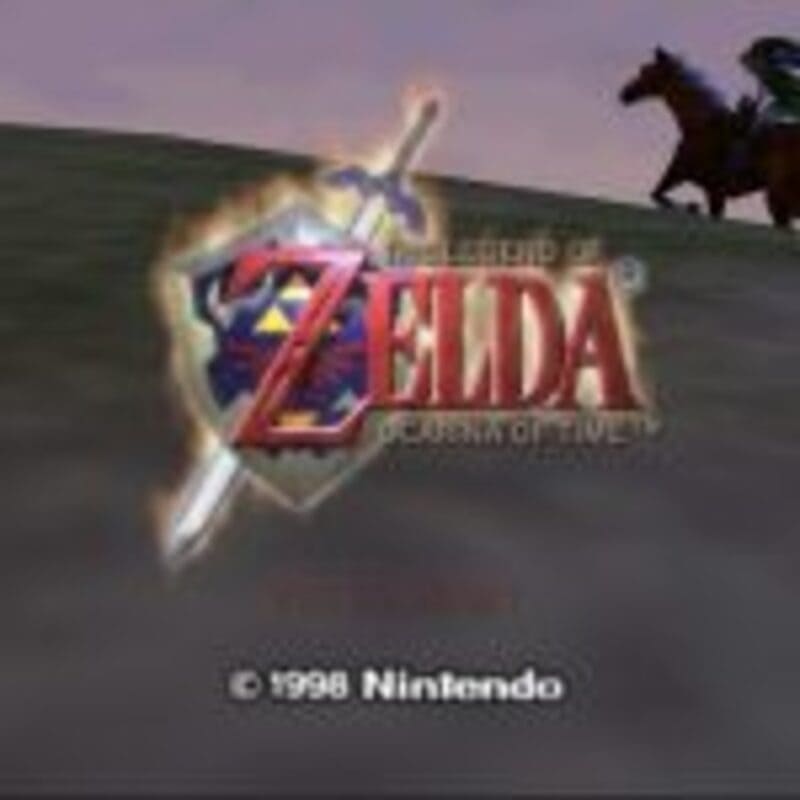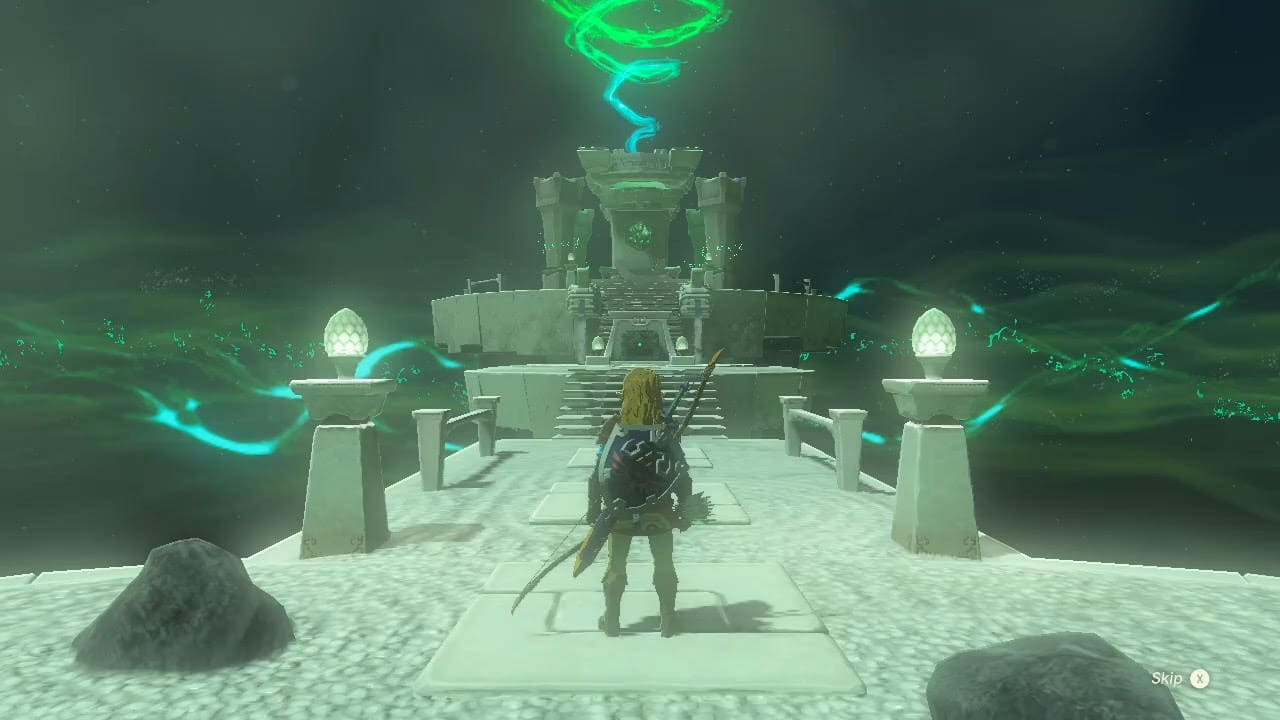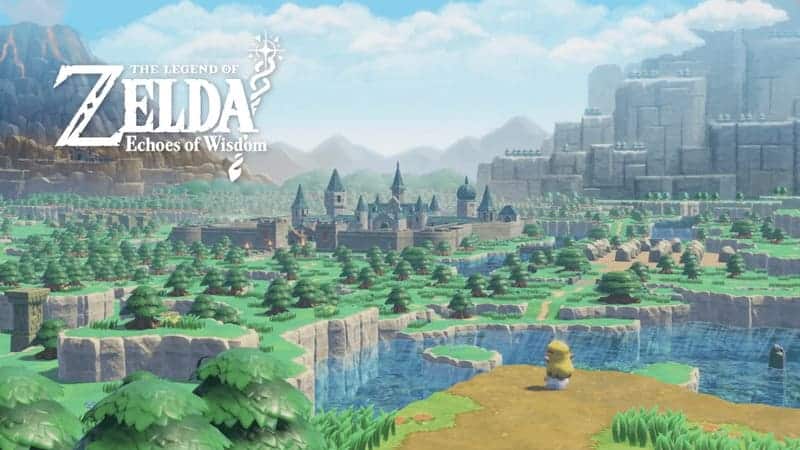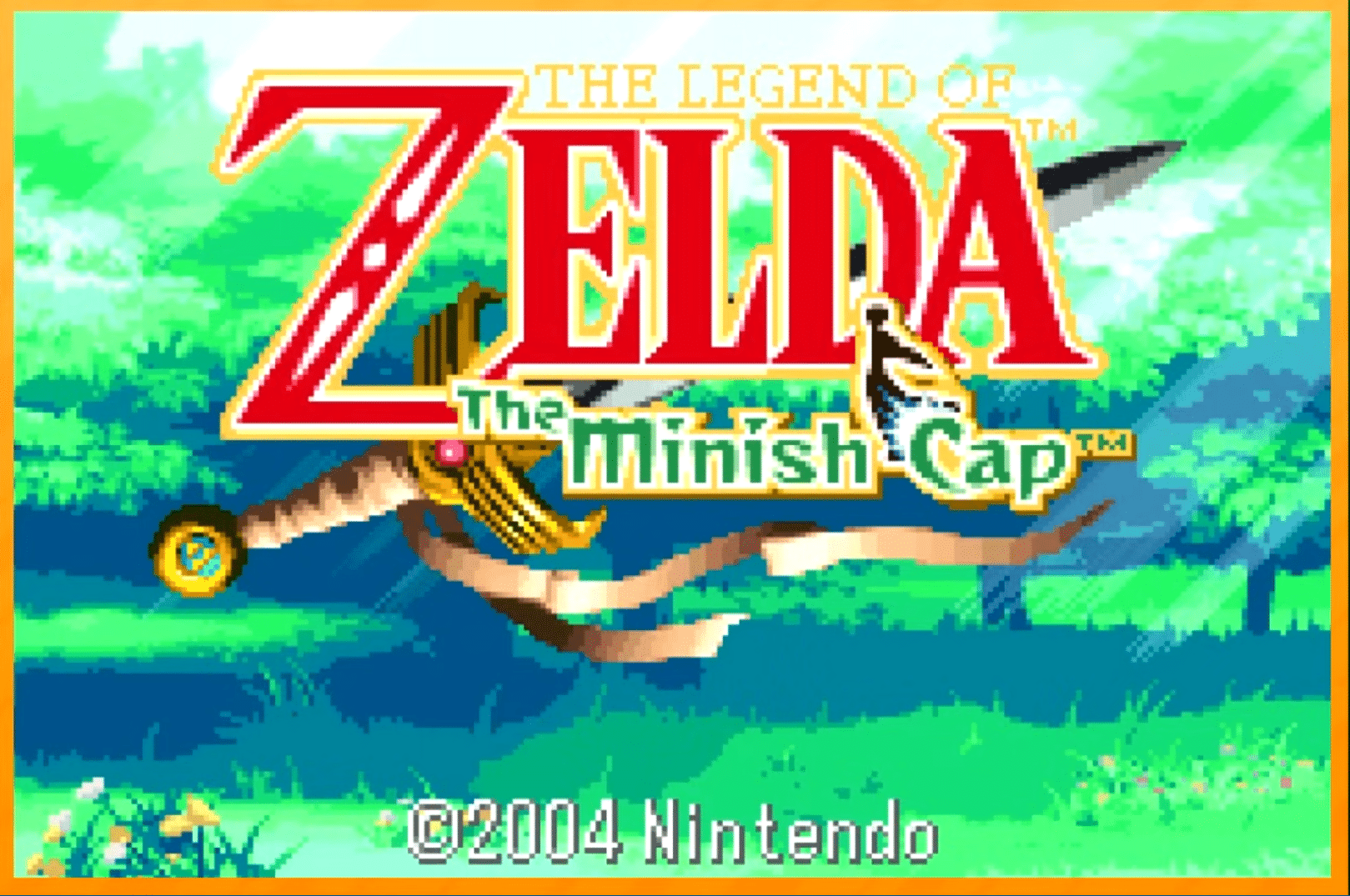Many of the Zelda games take place in the fictional kingdom of Hyrule. Despite many of them being implied to take place in the same Hyrule, the kingdom’s geography has a peculiar habit of changing and shifting between games. Sometimes the shifts are small and subtle, and sometimes the newer Hyrule has barely anything in common with the previous version. With Echoes of Wisdom releasing later this month and a short demo having been available at PAX West, let’s take a look at the many changes to Hyrule over the years.
The Legend of Zelda
The Legend of Zelda introduced the world of Hyrule, which boasts an impressively large world map for the time. Several of the landmarks on this version of the map would go on to become series staples, such as Death Mountain, Spectacle Rock, and the Lost Woods. Death Mountain makes up the entirety of northern Hyrule, Lake Hylia is roughly in the center of the map, the Lost Woods is in the southwestern corner, and Spectacle Rock is almost directly north of Lake Hylia. The Lost Woods must be passed through to access the Graveyard, and Spectacle Rock is where the final dungeon is hidden.
Adventure of Link
Adventure of Link reveals that the first game’s map was only a small portion of Hyrule – specifically, the southwestern corner of the mainland. It retroactively lists that section of the kingdom as being part of Death Mountain and expands both far north and far east of the original map. This incarnation of Hyrule features villages whose names are familiar to anyone who’s played Ocarina of Time, as Ocarina‘s Sages were named after Adventure of Link‘s villages. It also includes two islands east of the mainland’s coast – Eastern Hyrule, and Maze Island.
A Link to the Past
A Link to the Past, meant to be a prequel to the NES titles, features a drastically different world map from either of them. Lake Hylia is in the southeastern corner of Hyrule, Death Mountain is in the northeast, and the Lost Woods is in the northwest corner. In addition, this is the first Zelda game to feature Kakariko Village and Hyrule Castle, which are in the west and center of Hyrule respectively. This is also the first game to give Link a house, which is south of Hyrule Castle, and the first game to feature the Master Sword, which is hidden in the Lost Woods.
While the Dark World also plays a part in A Link to the Past‘s story, it isn’t a part of Hyrule. Rather, it is a reflection of Hyrule. During the events of the game, it is a corrupted reflection, thanks to Ganon taking the Triforce – before then, it was actually the Sacred Realm.
Ocarina of Time

With Link’s Awakening taking place on Koholint Island, the next Zelda game to take place in Hyrule was Ocarina of Time. This game is meant to be a prequel to A Link to the Past. It also features a drastically different take on Hyrule’s layout. In this title, Lake Hylia is in the south of the kingdom, with Kokiri Forest and the Lost Woods to the east, Death Mountain to the north with Kakariko Village at its base, and the Gerudo Valley to the west. The game also features Lon Lon Ranch in the middle of Hyrule Field, with Hyrule Castle accompanied by Castle Town to the west of Kakariko Village, and Zora’s Domain to the east.
Ocarina of Time also features the Sacred Realm, though unlike in A Link to the Past, the only accessible part of the Sacred Realm is the Chamber of Sages. This is the place where Link awakens after 7 years of sleep so he can become the Hero of Time, and where the Sages appear once they’ve awoken. It is said to be in the Temple of Light, though when Link leaves he finds himself in the Temple of Time.
Four Swords
Majora’s Mask takes place in Termina, Oracle of Ages takes place in Labrynna, and Oracle of Seasons takes place in Holodrum, so the next Zelda title to take place in Hyrule was Four Swords. This iteration of the kingdom is very different from previous games’ versions, with only Death Mountain returning from other games. The game is also segmented into stages, unlike other Zelda games, with only 5 stages in total (or 7 stages, for Four Swords Anniversary Edition).
The Wind Waker
The Hyrule of The Wind Waker is again very different from previous games’ versions, due in large part to this game’s Hyrule being submerged under an ocean. Much of the kingdom is inaccessible during the events of the game, with the exception of Hyrule Castle and Ganon’s Castle. However, the king does say that the islands are in fact the tops of mountains scattered across Hyrule, which implies this iteration of the kingdom is more mountainous than other games. Additionally, a little bit of Hyrule can be seen when exploring the outside of Hyrule Castle, and data miners have found more.
The castle itself sits on an island over a lake – very likely Lake Hylia – which is fed by a river that could very well be Zora’s River. Outside of Ganon’s Castle is a desert-like canyon, which could potentially be part of the Gerudo Desert. While this isn’t canon to the game, there is a fan-made 3D modeling project by Joe Kendrick called Wind Waker: Unflooded, which uses an unofficial map to imagine what Wind Waker‘s Hyrule might have looked like before the Great Flood while also incorporating elements from other Zelda games such as Twilight Princess and Breath of the Wild.
Four Swords Adventures
While Four Swords Adventures is a sequel to Four Swords as its title implies, its version of Hyrule is very different from the version seen in Four Swords. What it does have in common with Four Swords is its stage-based gameplay, meaning that the world isn’t fully explorable. Four Swords Adventures‘ version of Hyrule has a lot in common with the version seen in A Link to the Past. Hyrule Castle is in the center of the map, though Lake Hylia is east of it rather than southeast.
Death Mountain is north of the castle like it is in Ocarina of Time. However, Kakariko Village is west of the castle instead of to the east. The Desert of Doubt, which seems to be this game’s version of the Gerudo Desert, is in the southwest. A snowy region, aptly named Frozen Hyrule, is south of the castle. Above the kingdom floats the Realm of the Heavens, which contains the game’s final stage.
The Minish Cap
The Minish Cap features both returning landmarks and new locations. For instance, Lake Hylia makes a return, this time in the east of Hyrule. Lon Lon Ranch is west of Lake Hylia, with Hyrule Town (another name for Castle Town) west of Lon Lon Ranch. Surrounding Hyrule Town are North and South Hyrule Field. Interestingly, instead of Death Mountain, The Minish Cap features Mount Crenel in the northwest. South of Mount Crenel is the Castor Wilds. South of Lake Hylia is the Minish Woods, and above the northeastern part of Hyrule is the Cloud Tops. This incarnation of Hyrule also includes various Minish settlements, which are only accessible when shrinking down to the size of a Minish.
Twilight Princess
The Hyrule in Twilight Princess is unique thanks to it being a launch title for the Wii despite originally being developed for the GameCube. In the GameCube version, Link is left-handed like he has been in most other Zelda games. However, with the Wii version making use of motion controls and with most people being right-handed, Nintendo felt it would be confusing for players to swing the Wiimote with their right hand and see Link swing the sword with his left hand. Instead of simply mirroring Link’s character model, Nintendo chose to mirror the entire map of Hyrule for the Wii version. This mirrored version of Hyrule can also be explored in Twilight Princess HD, by playing in Hero Mode.
GameCube/(Wii U Normal Mode)
The GameCube version of the map is sometimes regarded online as the “canon” version of Twilight Princess‘ Hyrule, perhaps in part because Twilight Princess HD‘s Normal Mode uses the GameCube version of the map. Hyrule in this game is divided into four main regions, plus two areas that don’t technically fall into any of them.
Ordona
This region sits to the far south of Hyrule, and it’s where Link’s home village of Ordon Village is found. The light spirit Ordona can also be found here. A deep canyon sits between the Ordona region and the rest of Hyrule, over which is a rickety wooden bridge. Ordona is a forested area surrounded by mountains, with a small lake and a stream in Ordon Village.
Faron
North of Ordona lies the Faron region, protected by the light spirit Faron. This region doesn’t have any settlements, but it is home to two dungeons: the Forest Temple, and the Temple of Time. The Sacred Grove, Twilight Princess‘ version of the Lost Woods, can also be found in Faron. Like Ordona, the Faron region is entirely forested, though the interior of the Forest Temple has canyons much like the one between the Ordona and Faron regions. A section of Hyrule Field is considered as part of the Faron region.
Lanayru
The Lanayru region of Hyrule is to the west, and it includes Lake Hylia, Hyrule Castle, Castle Town, and parts of Hyrule Field. Lake Hylia is the furthest west part of the region, very close to the Gerudo Desert, and is fed by Zora’s River like it is in Ocarina of Time. A bridge known as the Great Hylian Bridge spans across Lake Hylia, connecting two sections of Hyrule Field.
Eldin
Eldin is to the east, and it includes Kakariko Village, Death Mountain, the Hidden Village, and parts of Hyrule Field. Unlike Faron, Lanayru, and Ordona, Kakariko Village is primarily characterized by red rock and dry or dead plant life. Like in Ocarina of Time, Kakariko Village is south of Death Mountain. However, the Hidden Village – which a sign identifies as “Old Kakariko” – is closer to Zora’s Domain than it is to Death Mountain.
Snowpeak
The Snowpeak Mountains are north of both Lake Hylia and the Gerudo Desert. Their entrance is a tunnel in Zora’s Domain, and at the start of the game, it is frozen over along with the rest of the domain. With the exception of Ordona, the Snowpeak Mountains are the only region that does not have Golden Bugs. Additionally, with the exception of the Gerudo Desert, it’s the only region that doesn’t have a light spirit.
Gerudo Desert
The Gerudo Desert is west of Lake Hylia, and at first only accessible by using Fyer’s cannon. In the northwest of the Gerudo Desert is the Arbiter’s Grounds dungeon, with the Bulblins’ base camp south of it. It also has the Cave of Ordeals, south of the Arbiter’s Grounds and hidden under the missing piece of the Eldin Bridge.
Wii/Wii U (Hero Mode)
The Wii version of the map is mirrored east-to-west. Gerudo Desert is to the east rather than the west, and Kakariko Village is to the west rather than the east. Hyrule Castle is still in the center, and the Ordona Province is still in the bottom center. However, Zora’s Domain is now in the northwest, and Snowpeak is in the northeast. Interestingly, the text on signs and even items are also mirrored, meaning that the Wii version of Twilight Princess also has a mirrored version of the Hylian script.
Spirit Tracks
While Phantom Hourglass took place in the World of the Ocean King, its sequel Spirit Tracks takes place in a world known as New Hyrule. It has no connection to The Wind Waker‘s Hyrule, sharing only the name. New Hyrule is split into five sections known as Realms: the Forest Realm, the Snow Realm, the Fire Realm, the Ocean Realm, and the Sand Realm. Almost all of the landmarks in Phantom Hourglass are unique to New Hyrule, with the exception of Hyrule Castle and Castle Town. Late in the game, a portal to the Dark Realm opens near the western shore of the Forest Realm.
Skyward Sword
Though the game starts on Skyloft, the majority of the game’s plot takes place in one of the regions of what is called the Surface. The name Hyrule is never mentioned in the game, but it’s implied that the Surface eventually comes to be named Hyrule after the game’s epilogue. It’s divided into three provinces: Eldin, Faron, and Lanayru. Each province is protected by a dragon who shares a name with their respective province. Many of the landmarks on the Surface are reminiscent of returning landmarks but are given different names, such as Lake Floria rather than Lake Hylia or Eldin Volcano rather than Death Mountain.
Much like Twilight Princess‘s Hyrule, the Faron province is almost entirely forested, and Eldin’s province is mostly rocky mountains. However, the Lanayru province is a vast desert. The Timeshift Stones found in the province show that in the distant past, it was more similar to the Faron province.
A Link Between Worlds
With A Link Between Worlds being an indirect sequel to A Link to the Past, it makes sense that this game’s map has a lot in common with A Link to the Past. All of the landmarks are in the same place as they are in A Link to the Past, with the only differences being that the dungeons are in different places and that some of the buildings and caves are different. There are various rifts that connect Hyrule to Lorule, an alternate universe that has a lot in common with A Link to the Past‘s Dark World.
Breath of the Wild
With Triforce Heroes taking place in Hytopia, Breath of the Wild is the next Zelda game to take place in Hyrule. Breath of the Wild‘s Hyrule is larger than any of the previous games. It’s split into 8 different regions: Hebra, Gerudo, Central Hyrule, Akkala, Eldin, Lanayru, Necluda, and Faron. This incarnation of Hyrule has many returning landmarks from other games, though some are in different places than they were in other games.
Hyrule Castle and the ruins of Castle Town are in Central Hyrule, as well as the Great Plateau. Death Mountain is in the Eldin region, northeast of Central Hyrule. Lake Hylia is south of Central Hyrule in the Faron region. Spectacle Rock is in the northeastern portion of Gerudo, which is in the far southwestern corner of the kingdom. Kakariko Village is in the Necluda region, northeast of the Great Plateau. North of it, in the Lanayru region, sits the Zora’s Domain. The Lost Woods, which also include the Korok Forest, is northeast of the castle.
Tears of the Kingdom

Tears of the Kingdom‘s Hyrule is very similar to Breath of the Wild‘s, with the exception of caves that have appeared across the kingdom and some changes to the roads. The landmarks are all in the same locations, though the Sheikah shrines and Breath of the Wild‘s towers have vanished. Instead, there are Zonai shrines and new towers. Chasms have opened up across Hyrule since the Upheaval and Hyrule Castle is suspended on a stone pillar above one such chasm. There is also debris all across the kingdom from the Upheaval, and the strange Ring Ruins that float over Kakariko Village. Gerudo Desert also features sand sinkholes in many places that will take Link to underground caves.
What is new in Tears of the Kingdom are the Depths and the floating islands of the sky. The tutorial area of Tears of the Kingdom is the Great Sky Island, which is comparable to Skyward Sword’s Skyloft in size. Scattered across the sky are dozens of other floating islands, as well as two dungeons and the upper floors of the three labyrinths. Below the surface of the kingdom lies the Depths, a massive underground cave that is an eerie mirror of Hyrule much like the Dark World of A Link to the Past. Bodies of water on the surface become walls of stone, hot springs become lava pools, and there are abandoned Zonaite mines.
Echoes of Wisdom
This brings us to Echoes of Wisdom, the next Zelda game that’s releasing later this month. While we have yet to see the full version of the map, the trailers and the demo available at PAX West have shown parts of the map already. The game seems to feature some returning landmarks, such as Lake Hylia, Hyrule Castle, Castle Town, the Gerudo Desert, and Kakariko Village. There are also some new landmarks and locations, such as the Jabul Waters, the Southern Forest, and the Deku Forest. The game’s world also features many rifts that have stolen pieces of Hyrule and brought them to a strange realm known as the Still World.
Final Thoughts
Hyrule’s geography and layout have changed many times over the years, and will likely change again in the next Zelda title. What other new features of its geography will we see in Echoes of Wisdom? How will Hyrule look in the next Zelda game? Will there be similarities to previous games, or will the next game’s version of Hyrule be wholly unique?
For More Great Content
Are you desiring top-tier content that covers everything? From thrilling sports and intoxicating entertainment news to gaming tips and professional betting advice, Total Apex covers it all. Delve into our no-fluff articles to stay ahead of the game with the latest sports action, uncover the hottest trends in entertainment, and get the latest scoops in the gaming industry that will take your experiences to the next level.
Finally, our betting advice will give you a decisive edge over the competition and increase your odds of beating the books. Whether you’re looking to stay updated or gain a competitive edge, Total Apex is your one-stop shop for all things compelling and relevant. Don’t forget we cover Fantasy Sports, too!
Check out all our sites: Total Apex Sports, Total Apex Fantasy Sports, Total Apex Entertainment, Total Apex Sports Bets, and Total Apex Gaming. Out of the ashes of obscurity will rise a beast. Always remember to Respect The Hustle! Follow us on Twitter/X @TotalApexSports to stay informed.



